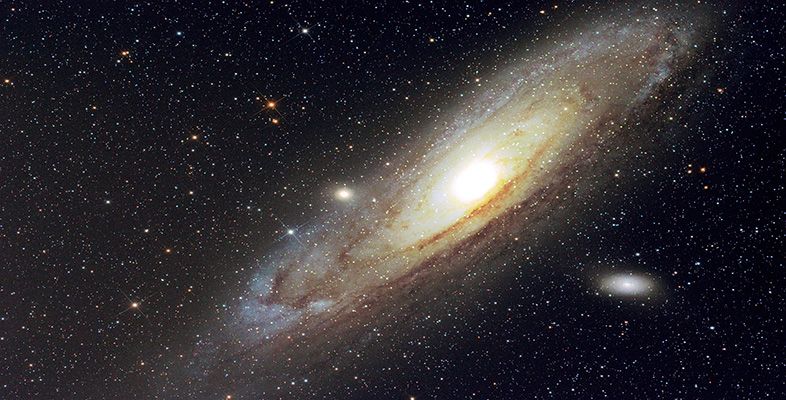
72 Newly-Discovered Galaxies Changes Odds in Fermi’s Paradox
by Paul Seaburn December 1, 2017 (mysteriousuniverse.org)
• In 1950, Enrico Fermi posed a question to his colleagues at the Los Alamos National Labs, ‘If there are billions of stars in the galaxy, all with it’s own planets, then why have we not been visited by other galactic civilizations?’ This is known as the Fermi Paradox.
• Astronomers at the European Southern Observatory, using a Multi-Unit Spectroscopic Explorer on a large telescope in northern Chili, focused on a small spot in the constellation Fornax and found 72 new galaxies containing a few trillion new stars (and trillions of new planets). This greatly increases the chances of many more planets that could harbor not just life, but intelligent life.
• [Editor’s Note] “Why have we never been visited?” Who was Fermi kidding? According to basically ALL of the whistleblowers, our solar system and the Earth itself is swarming with technologically advanced extraterrestrials ranging from the many who are here only to observe, to others who would assist humanity from a distance, to a handful that are well-into the process of enslaving and subjugating the hapless human population.
“Where is everybody?”
That’s the question Enrico Fermi asked his co-workers at the at Los Alamos National Laboratory in 1950 as they pondered lunch and why, if there are billions of stars in the Milky Way galaxy older than our Sun with a high probability of having planets similar to Earth, we’ve never had any contact (that they knew of) with other civilizations – advanced or lesser. The question lives on today as the famous Fermi Paradox.
“Redo the numbers, Enrico. They just found 72 more galaxies!”
If they were alive today, that might be his friends’ response to the news that astronomers taking the deepest view of the universe ever have discovered at least 72 more galaxies. Even using conservative estimates, that’s a few trillion more stars and, if they average 8 planets like ours, many trillions more planets, of which a tiny but now larger percentage could hold life.
“Where is everybody?”
Let’s take the easy answer first. In a press release this week, ESO astronomers announced that they pointed the Multi Unit Spectroscopic Explorer (MUSE) instrument on the ESO’s Very Large Telescope (VLT) in Chile at a small spot in space known as the Hubble Ultra Deep Field (HUDF). Located in the constellation Fornax, it was first observed by the Hubble Space Telescope from September 24, 2003, to January 16, 2004. That data allowed astronomers to look back 13 billion years and, combined with later observations using the Wide Field Camera 3 (WFC3), estimate that the small region contained about 10,000 galaxies.
Then came MUSE. It was installed on the VTL in 2014 and astronomers used it for about two years (137 hours of telescope time) to further study the HUDF and detect galaxies 100 times dimmer than before that emit Lyman-alpha radiation, an indication that they are extremely distant, young, low-mass galaxies. Seventy-two of these galaxies were counted, with some estimated to have existed just 800 million years after the Big Bang.
FAIR USE NOTICE: This page contains copyrighted material the use of which has not been specifically authorized by the copyright owner. ExoNews.org distributes this material for the purpose of news reporting, educational research, comment and criticism, constituting Fair Use under 17 U.S.C § 107. Please contact the Editor at ExoNews with any copyright issue.
European Southern Observatory, Fermi's Paradox, galaxies, stars